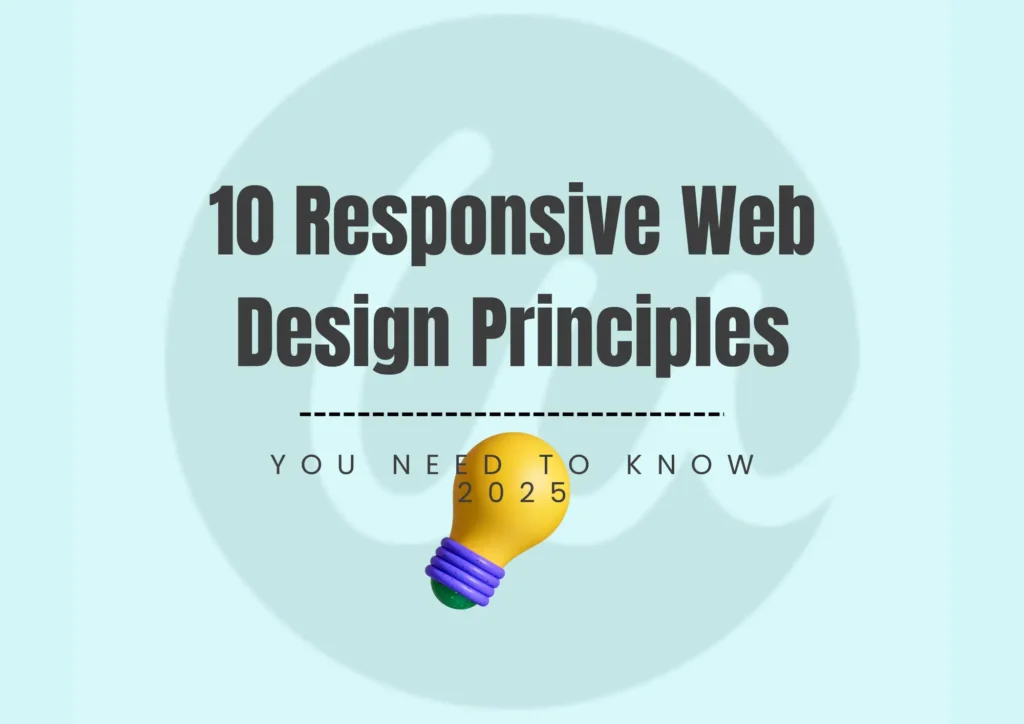Introduction
In the fast-paced digital world of 2025, having a website isn’t enough—you need a responsive one. Responsive web design has evolved from being a “nice to have” feature into a core element of successful SEO strategies. With mobile-first indexing now the norm and user expectations at an all-time high, responsive design is essential if you want to climb and maintain high positions on search engine results pages (SERPs).
In this blog, we’ll explore why responsive web design is essential for SEO in 2025, how it impacts site performance, and what businesses should prioritize to stay ahead.
What Is Responsive Web Design?
Responsive web design (RWD) refers to a web development approach where your website automatically adjusts its layout, content, and functionality to fit the screen size and orientation of the user’s device. Whether someone visits your site on a desktop, smartphone, tablet, or foldable device, they receive a seamless and optimized experience.
Why Google Cares About Responsive Design
Back in 2018, Google began mobile-first indexing, meaning it primarily uses the mobile version of your website for ranking and indexing. Fast forward to 2025, and Google’s algorithms are even more focused on mobile usability, speed, and user experience.
If your website isn’t responsive, Google may:
- Penalize your rankings
- Ignore or de-prioritize your pages in mobile search
- Flag usability issues in Google Search Console
1. Improved User Experience = Higher Rankings
Search engines prioritize user-centric websites. A responsive design ensures that visitors can easily read, navigate, and interact with your site, no matter their device. This enhances key engagement metrics, including:
- Lower bounce rates: Users stay longer when they can easily view and interact with your content.
- Higher session duration: Seamless navigation across devices encourages deeper exploration.
- More conversions: Frictionless UX leads to increased sales, signups, and leads.
Google interprets these behavioral signals as positive, thereby boosting your SEO.
2. Core Web Vitals and Mobile Page Speed
In 2025, Core Web Vitals remain a crucial ranking factor. These are performance metrics that assess:
- Largest Contentful Paint (LCP) – How fast your main content loads
- First Input Delay (FID) – How responsive your site is to user actions
- Cumulative Layout Shift (CLS) – How visually stable your layout is
Responsive design, when paired with modern CSS frameworks and performance optimization, ensures fast loading and minimal layout shifts across all devices. With Google emphasizing page experience signals, ignoring this is SEO suicide.
3. Single URL for All Devices Simplifies SEO
Responsive design uses one URL and one set of HTML/CSS across devices, unlike adaptive designs or mobile-specific versions (like m.example.com). This uniformity helps:
- Consolidate page authority and backlinks
- Prevent duplicate content issues
- Simplify site indexing and crawling
As a result, your website’s SEO equity is better preserved and enhanced, making it easier for search engines to understand and rank your pages.
4. Lower Bounce Rates from Mobile Users
As of 2025, over 70% of web traffic comes from mobile devices. If your website isn’t mobile-friendly, users are more likely to leave, increasing your bounce rate—a signal that can negatively impact SEO.
Responsive design reduces friction and adapts content presentation, helping users engage more and bounce less.
5. Better Social Sharing & Link Building
Many social shares and backlinks originate from mobile devices. If a mobile visitor clicks a shared link and ends up on a broken or poorly designed page, they’re unlikely to stay—or link back.
A responsive website ensures:
- Shared links look good on all devices
- Embedded previews render properly
- Publishers and bloggers are more likely to link to a well-optimized site
And as we know, backlinks remain a cornerstone of SEO success.
6. Improved Local SEO and “Near Me” Searches
In 2025, local search continues to dominate mobile behavior. Users frequently search for things like “coffee shops near me” or “emergency plumber nearby” on their phones.
Responsive design directly supports local SEO by:
- Ensuring NAP (Name, Address, Phone) details are easily visible
- Displaying interactive maps and click-to-call buttons
- Enabling fast loading of local landing pages
Google prioritizes mobile-friendly local sites in its results, so responsive design is a must for local businesses.
7. Adaptation to AI-Powered Search and Voice Search
With AI-driven search engines like Google SGE (Search Generative Experience) and the rise of voice search, responsiveness is no longer just about screen size—it’s about adaptive content delivery. Responsive sites are better equipped to:
- Display structured data in mobile-friendly formats
- Serve fast, voice-optimized content snippets
- Load conversational interfaces smoothly
These attributes are vital in 2025, where search is becoming more dynamic and contextual.
8. Enhanced Crawl Budget Efficiency
Google allocates a limited crawl budget to each website. Non-responsive designs, especially those that rely on multiple versions for different devices, can confuse crawlers and waste budget. Responsive sites streamline:
- Crawling paths
- Canonical URLs
- Sitemap structures
That means better SEO efficiency and improved indexing.
How to Make Your Website Responsive in 2025
To fully leverage the SEO benefits of responsive design, you need to follow modern best practices:
- Use flexible grid systems (e.g., CSS Grid, Flexbox)
- Implement viewport meta tags for proper scaling
- Leverage media queries for breakpoints across screen sizes
- Optimize images and use next-gen formats like WebP/AVIF
- Test responsiveness using Google’s Mobile-Friendly Test
- Minimize blocking resources and prioritize above-the-fold content
- Integrate responsive typography and buttons for touch screens
Final Thoughts
In 2025, responsive web design is not optional—it’s foundational to SEO success. As mobile usage, AI-powered search, and user expectations evolve, your website must be fast, flexible, and user-centric. Google is clear: websites that prioritize responsiveness will outperform those that don’t in the SERPs.
If you’re planning a website redesign or SEO strategy this year, make responsive design your top priority. It’s not just about looking good—it’s about being found, ranked, and loved by both users and search engines.
Key Takeaways:
- Google uses mobile-first indexing, so responsive design is critical.
- A seamless mobile experience improves rankings, bounce rate, and engagement.
- Core Web Vitals and fast mobile speed heavily impact SEO in 2025.
- One responsive site simplifies SEO and avoids duplicate content issues.
- It’s essential for local SEO, voice search, and AI-driven results.
Need Help with Responsive Web Design or SEO?
Contact our expert team today to audit your website and implement a winning strategy for 2025 and beyond.



